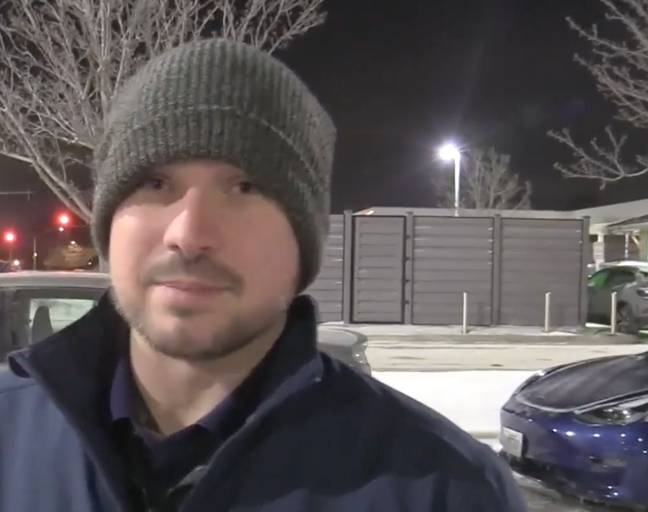With temperatures plummeting to as low as -17°C in Chicago right now, many residents are struggling to even leave their homes.
And those who have managed to get out and about in their cars are also running into problems – especially Tesla drivers who are struggling to charge their vehicles.
According to local news channels, drivers of the electric vehicles have been left stranded in dangerous temperatures due to a lack of working ports and the time it’s taking them to charge up.
“Our batteries are so cold it’s taking longer to charge now, so it should take 45 minutes, it’s taking two hours for the one charger that we have,” Tesla owner Brandon Welbourne told ABC7 Chicago.
“I have seen at least 10 cars get towed away from here because the cars, they died, they’ve run out of battery. It’s too cold, it uses too much of the energy to try to keep the car somewhat reasonable temperature, so everybody is getting towed away and we have nowhere to charge.”
Many drivers are waiting for hours in the extreme weather, with their cars totally out of power.
“Right from outside the highway, there’s a whole line of cars, about over 20 cars, all Tesla cars, and you can look around here, every single car is a Tesla car, full with Tesla cars this whole parking lot. And we’re waiting and waiting for over an hour,” said Sajid Ahmed, who was waiting for a charger in the Oak Brook area of the city.
“It’s unfortunate that these cars are sitting dead in the spots.”

Many drivers didn’t anticipate the long wait, and have lost power while queuing.
Over on the Tesla website, the manufacturer explains that the vehicles use more energy in cold weather in order to heat the battery and the inside of the car.
Tesla recommends not allowing the power to drop below 20 percent to reduce the impact of cold temperatures.
“A blue snowflake icon may appear on your touchscreen and in the app if your battery is too cold for full power and ideal range. When this icon is displayed, you may notice reduced regenerative braking and acceleration,” Tesla explains.
“Leaving your vehicle plugged in whenever possible and keeping the charge level above 20 percent when not plugged in will reduce the impact of cold temperatures.”

It’s not just Tesla vehicles that are having problems. In the cold temperatures, lithium-ion batteries can get damaged, lose their ability to charge and drop their power supplies more quickly.
So if you’ve noticed your devices playing up during a cold snap, that could well be why.
UNILAD has reached out to Tesla for comment.


